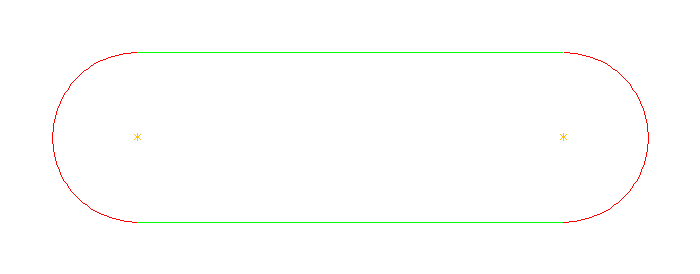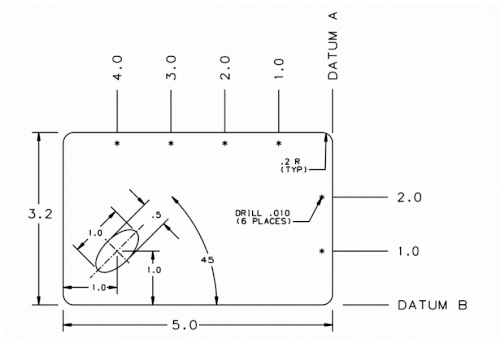IGES

The Initial Graphics Exchange Specification (IGES) (pronounced eye-jess) defines a neutral data format that allows the digital exchange of information among Computer-aided design (CAD) systems.
The official title of IGES is Digital Representation for Communication of Product Definition Data, first published in January, 1980 by the U.S. National Bureau of Standards as NBSIR 80-1978. Many documents (like early versions of the Defense Standards MIL-PRF-28000[1] and MIL-STD-1840[2]) referred to it as ASME Y14.26M, the designation of the ANSI committee that approved IGES Version 1.0.
Using IGES, a CAD user can exchange product data models in the form of circuit diagrams, wireframe, freeform surface or solid modeling representations. Applications supported by IGES include traditional engineering drawings, models for analysis, and other manufacturing functions.
History

The IGES project was started in 1979 by a group of CAD users and vendors, including Boeing, General Electric, Xerox, Computervision and Applicon, with the support of the National Bureau of Standards (now known as NIST) and the U.S. Department of Defense (DoD). The name was carefully chosen to avoid any suggestion of a database standard that would compete with the proprietary databases then used by the different CAD vendors.
Since 1988, the DoD has required that all digital Product Manufacturing Information (PMI) for weapons systems contracts (the engineering drawings, circuit diagrams, etc.) be delivered in electronic form, specifically in IGES format. As a consequence, any CAx software vendor who wants to market their product to DoD subcontractors and their partners must support the import (reading) and export (writing) of IGES format files.
An ANSI standard since 1980, IGES has generated enough data to fill warehouses full of magnetic tapes and CD-ROMs of digital PMI for the automotive, aerospace, and shipbuilding industries, as well as for weapons systems from Trident missile guidance systems to entire aircraft carriers. These part models may have to be used years after the vendor of the original design system has gone out of business. IGES files provide a way to access this data decades from now. Today, plugin viewers for Web browsers allow IGES files created 20 years ago to be viewed from anywhere in the world.[3]
After the initial release of STEP (ISO 10303) in 1994, interest in further development of IGES declined, and Version 5.3 (1996) was the last published standard. A decade later, STEP has yet to fulfill its promise of replacing IGES, which remains the most widely used standard for CAx and PMI interoperability.
File format
An IGES file is composed of 80-character ASCII records, a record length derived from the punched card era. Text strings are represented in "Hollerith" format, the number of characters in the string, followed by the letter "H", followed by the text string, e.g., "4HSLOT" (this is the text string format used in early versions of the Fortran language). Early IGES translators had problems with IBM mainframe computers because the mainframes used EBCDIC encoding for text, and some EBCDIC-ASCII translators would either substitute the wrong character, or improperly set the Parity bit, causing a misread.
Here is a very small IGES file from 1987,[4] containing only two POINT (Type 116), two CIRCULAR ARC (Type 100), and two LINE (Type 110) entities. It represents a slot, with the points at the centers of the two half-circles that form the ends of the slot, and the two lines that form the sides.
S 1
1H,,1H;,4HSLOT,37H$1$DUA2:[IGESLIB.BDRAFT.B2I]SLOT.IGS;, G 1
17HBravo3 BravoDRAFT,31HBravo3->IGES V3.002 (02-Oct-87),32,38,6,38,15, G 2
4HSLOT,1.,1,4HINCH,8,0.08,13H871006.192927,1.E-06,6., G 3
31HD. A. Harrod, Tel. 313/995-6333,24HAPPLICON - Ann Arbor, MI,4,0; G 4
116 1 0 1 0 0 0 0 1D 1
116 1 5 1 0 0D 2
116 2 0 1 0 0 0 0 1D 3
116 1 5 1 0 0D 4
100 3 0 1 0 0 0 0 1D 5
100 1 2 1 0 0D 6
100 4 0 1 0 0 0 0 1D 7
100 1 2 1 0 0D 8
110 5 0 1 0 0 0 0 1D 9
110 1 3 1 0 0D 10
110 6 0 1 0 0 0 0 1D 11
110 1 3 1 0 0D 12
116,0.,0.,0.,0,0,0; 1P 1
116,5.,0.,0.,0,0,0; 3P 2
100,0.,0.,0.,0.,1.,0.,-1.,0,0; 5P 3
100,0.,5.,0.,5.,-1.,5.,1.,0,0; 7P 4
110,0.,-1.,0.,5.,-1.,0.,0,0; 9P 5
110,0.,1.,0.,5.,1.,0.,0,0; 11P 6
S 1G 4D 12P 6 T 1
The file is divided into 5 Sections, indicated by a character (S, G, D, P, or T) in column 73. The characteristics and geometric information for an entity is split between two sections; one in a two record, fixed-length format (the Directory Entry, or DE Section), the other in a multiple record, comma delimited format (the Parameter Data, or PD Section), as can be seen in a more human-readable representation of the file.[5]
When displayed, the user should see two yellow points (hard to see on a white background, but most CAD systems use a black background), one located at the origin of model space [0,0,0], two red circular arcs, and two green lines.

A Recursive Standard
One of the unique features of the IGES standard is that it was the first ANSI Standard to be documented using itself. Since Version 4.0, all of the technical illustrations for the printed version of the standard have been generated from IGES files. The electronic publishing system (LaTeX) integrates raster images generated from IGES files into the PostScript sent to the laser jet computer printer, so text and images are printed on the same page for subsequent use as camera-ready copy for commercial publication. Beginning with IGES Version 5.2, this is how the standard was generated, and Version 5.3 (the most recent ANSI approved version) is available as a PDF document.[6]
Many of the illustrations (all of which conform to the Defense Department's MIL-D-28000 Engineering Drawings Subset of IGES) use the entities that they describe, e.g., the illustration of the LEADER (ARROW) ENTITY (Type 214) can be used as a test case for translator implementers, because it contains all 12 arrow head styles defined by the standard. These WYSIWYG example files can be distinguished by a leading "F" and trailing "X" in the file name (like f214x.igs[7]), and this library is called the IGES X-files by members of the IGES community.
Here is one of the example figures, Figure 2 from Appendix A (fmeparte.igs[8]), that has appeared in every version of IGES since Version 3.0. It uses linear, angular, and ordinate dimension entities, as well as examples of both circular and conic arcs. It is usually the first part used when testing an IGES translator, because the standard has a picture of what it should look like.

See also
References
- ^ "MIL-PRF-28000B" (PDF). navy.mil. 1999-09-30.
- ^ "MIL-STD-1840C" (PDF). navy.mil. 1997-06-99.
{{cite web}}: Check date values in:|date=(help) - ^ "Rotate an IGES part from 1990 with Java".
- ^ "MISC - IGES Example File slot".
- ^ "MISC - IGES Example File slot (dump)".
- ^ "IGES 5.3 (ANSI-1996)" (PDF). US Product Data Association. 1996-09-23.
- ^ "WYSIWYG - IGES Example File f214x".
- ^ "MISC - IGES Example File figa2".
